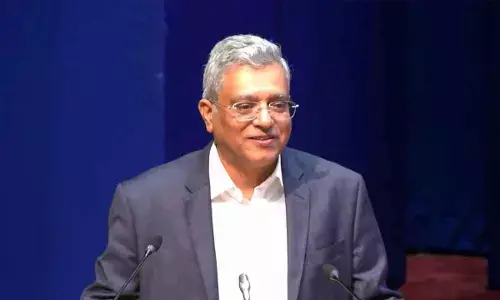Creative Economy: Economic impact of cultural events

Bharat, a land of diverse cultures and traditions, is home to countless cultural events that celebrate its rich heritage.
Bharat, a land of diverse cultures and traditions, is home to countless cultural events that celebrate its rich heritage. These events, ranging from religious festivals to literary gatherings, have grown beyond their traditional roots to become major contributors to the nation’s economy. From grand festivals to regional fairs, these events have become central to both local and national economies. As India continues to witness a shift towards a more dynamic and inclusive economy, cultural events, large-scale festivals, and fairs like the Hornbill Festival, NagobaJatra, Maha Kumbh, literary festivals, and traditional melas such as the Suraj Kund Mela have evolved into catalysts of economic growth, offering livelihood opportunities and showcasing the creative potential of the nation.
As Bharat continues to globalize, the potential of cultural events as an economic and cultural export remains immense. By addressing challenges like sustainability and logistics, and leveraging digital technologies, the country can further enhance the global appeal of its cultural festivals. This synergy between culture and economy underscores the timeless adage that “culture is the soul of a nation,” shaping not only its identity but also its prosperity.
Cultural Festivals and Their Role in Economic Growth
Cultural events in India are not just celebrations of tradition; they are powerful drivers of the economy. These events create vast economic opportunities by generating revenue through tourism, employment, handicraft sales, and local businesses. The direct and indirect economic contributions of these festivals can be analyzed under several key areas.
1. Tourism and Hospitality Sector
One of the most prominent economic benefits of large-scale cultural events is the increase in tourism. For instance, Maha Kumbh Mela which is held every twelve years in Prayagraj, Uttar Pradesh has attracted more than 120 million visitors in 2019 from across the globe, making it one of the largest gatherings of people in the world. According to the Government of Uttar Pradesh, the 2019 Kumbh Mela contributed approximately ₹1,200 crore to the state’s economy, mainly from hospitality, transport, and local businesses.
Similarly, the Hornbill Festival in Nagaland, often referred to as the “Festival of Festivals,” draws thousands of domestic and international tourists every year. The event promotes Nagaland’s rich tribal culture, crafts, and traditional performances. The tourism revenue generated during the festival has been integral in boosting the state’s economy, especially in the hospitality and handicrafts sectors.
The Maha Kumbh and Hornbill Festival provide significant employment opportunities, ranging from hospitality services, transport, food vendors, to security and entertainment services, further bolstering the local economy.
2. Livelihood and Employment Opportunities
Cultural events provide a platform for creative professionals, artisans, and performers to showcase their talents and sell their products. Handicrafts, local art forms, and traditional clothing often gain recognition at these events, leading to direct sales and long-term visibility in both domestic and international markets.
For example, the Suraj Kund Mela, an annual craft fair held in Haryana, is an excellent example of an event that supports local artisans and craftspeople. This mela, which attracts participants from over 20 countries, has contributed to the livelihoods of thousands of artisans involved in pottery, weaving, handloom, and other traditional crafts. According to reports, Suraj Kund Mela generates annual revenue exceeding ₹100 crore through entry fees, local businesses, and the sale of handicrafts.
Similarly, festivals like NagobaJatra, held in Adilabad, Telangana, provide significant economic opportunities for small-scale vendors, performers, and local artisans, who showcase their traditional crafts and cultural heritage. Such fairs also bring attention to local agriculture, food products, and tourism, generating employment in the process.]
3. Boost to Local and National Brand Recognition
Large-scale festivals and events also contribute to building India’s brand on the global stage. The Jaipur Literature Festival (JLF), for instance, is one of the largest literary events in the world. It attracts not just writers and thinkers but also international visitors, generating revenue for hotels, restaurants, and local businesses. The event showcases country’s rich literary heritage while promoting tourism and creating jobs in various sectors. In 2019, the JLF reported a revenue generation of ₹80 crore, which included contributions from ticket sales, sponsorships, and merchandise sales.
The Kochi-Muziris Biennale, an international contemporary art exhibition, has similarly contributed to the development of Kochi’s tourism sector. The Biennale has not only given a platform to Indian and international artists but also elevated Kerala’s status as a cultural tourism hub, resulting in increased footfall to the state and economic benefits to local businesses, hotels, and art galleries.
4. Promoting Local Industries and Businesses
Cultural events also encourage the growth of ancillary businesses such as event management companies, food vendors, and souvenir producers. These events often act as platforms for these small businesses to flourish. At the Pushkar Fair in Rajasthan, for instance, livestock traders, souvenir sellers, and local food vendors see a massive increase in their income during the festival days.
Moreover, these events stimulate demand for services like transportation (both local and interstate), event logistics, decorations, and media coverage, providing income to a variety of service industries.
Statistical Data and Case Studies
Statistical data regarding the economic impact of cultural festivals in India is difficult to compile in a uniform manner due to variations in the scale, type, and duration of events. However, government reports, local authorities, and event organizers often publish data related to ticket sales, tourism footfall, and economic impact assessments.
1. Maha Kumbh Mela (2019) – ₹1,200 crore contribution to the economy (Government of Uttar Pradesh).
2. Hornbill Festival – Estimated revenue generation of ₹100 crore for Nagaland annually, driven by tourism and handicraft sales.
3. Jaipur Literature Festival (JLF) – ₹80 crore in 2019.
4. Suraj Kund Mela – Over ₹100 crore in annual revenue.
Durga Puja, Pushkar Fair, Kala Ghoda Arts Festival and many more have become significant economic drivers, impacting tourism, hospitality, and the creative economy. For instance, Durga Puja generates ₹32,000 crore annually, while cultural tourism contributed 30.5% to India’s tourism revenue in 2022. These festivals create jobs for artists, musicians, and performers, and promote local industries like handicrafts. With increasing digital integration and global participation, cultural events contribute to national GDP and enhance India’s global cultural presence, though challenges like sustainability and logistics remain. These figures underline the significant economic potential of cultural events in India, demonstrating that these events are not merely about cultural expression but are powerful engines of growth and livelihood.

















